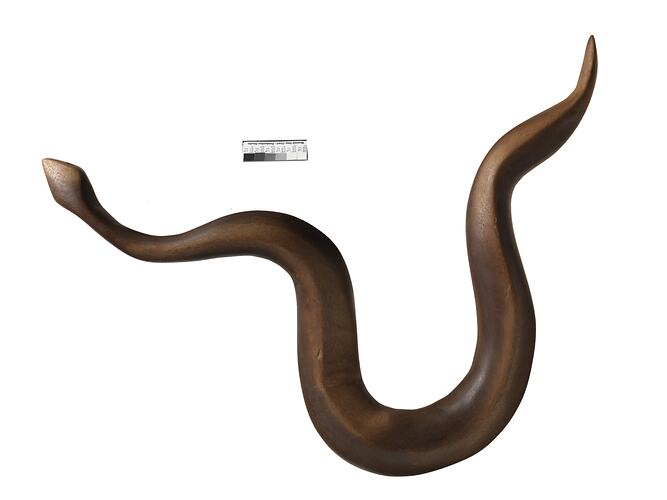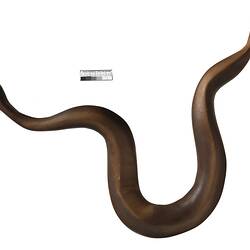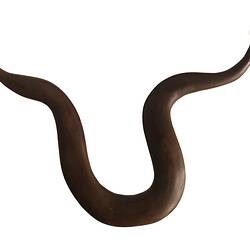Summary
Liru (poisonous snakes) play an important role in Yankunytjatjara Wapar (Creation) stories, where they are featured as ancestors who travelled thousands of kilometres before and after they came to Uluru.
The Mutitjulu waterhole at Uluru is the home of two ancestral beings: Kuniya, the Woman python, and Liru. The story tells of Kuniya coming from far away to hatch her children at Uluru; her movements, as she constantly entered and left her camp, formed deep grooves in the rock. One day, her nephew enraged a group of Liru, who travelled from the south-west to take revenge on him. When they saw him resting at the base of Uluru, they hurled spears at him, eventually killing him.
Overcome with grief and anger when hearing of her nephew's death, Kuniya raced along the curves of the rock to Mutitjulu waterhole, where she confronted one of the Liru warriors, who mocked her grief and rage. She began a dance of immense power and magic, rubbing her body with sand as she moved towards the Liru warrior. She took up her wana (digging stick) and struck his head twice, killing him. The signs of this terrible conflict are still visible on the rocks around the waterhole.
Local Name
Liru
Physical Description
Carved wooden snake. The snake is curved and the back has a slight ridge running length of back. The snake's head is lifted above the horizontal plane. Body of snake is approx 55mm wide. Carving is smooth and polished but has no pokerwork decoration except for eyes and edge of mouth which is carved into the head.
Significance
Anangu, the Pitjantjatjara and Yankunytjatjara people of South Australia and the Northern Territory, have been making carved-wood sculptures for many generations. Punu, the Pitjantjatjara term for shrub or tree, is also used to refer to these sculptures and other implements made from wood. Exactly when and where the animal carvings were first made is uncertain, but the practice was encouraged by the Ernabella Presbyterian Mission in the 1950s, and the prevalence of these carvings increased significantly in Central Australia with the development of tourism at Uluru in the late 1950s. As a precursor to the commercial success of Aboriginal art in the late 1970s, the sale of carved animals to tourists enabled Anangu to develop an independent source of income.
More Information
-
Object/Medium
Animal figure
-
Maker
-
Cultural Groups
-
Locality
-
Date Produced
-
Collector
-
Date Collected
-
Object Measurements
530 mm (Length), 365 mm (Width), 75 mm (Height)
-
Classification
-
Date Made
-
Maker
-
Clan/Language Group
-
Place Made
-
Indigenous Region
-
Keywords
-
Type of item
-
Discipline
-
Category
-
Collecting Areas


